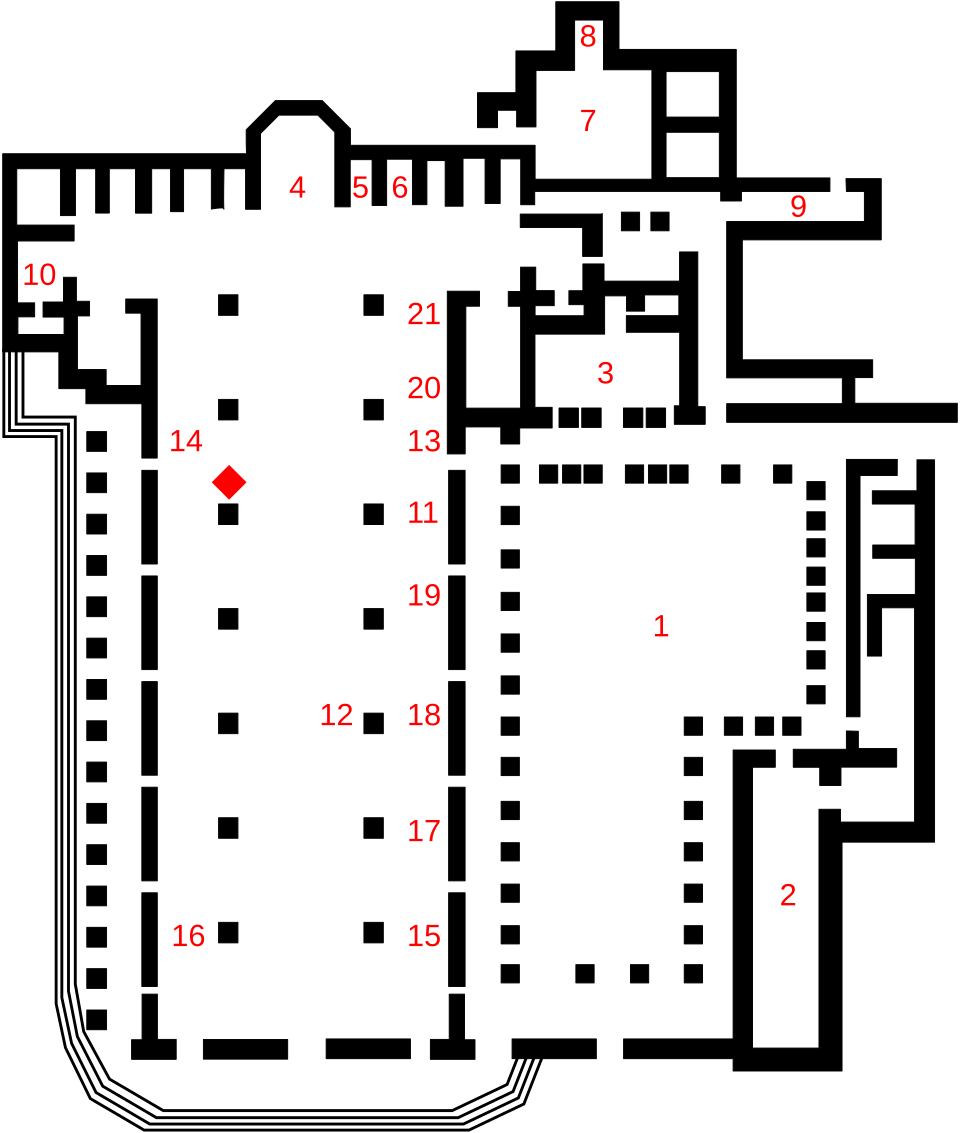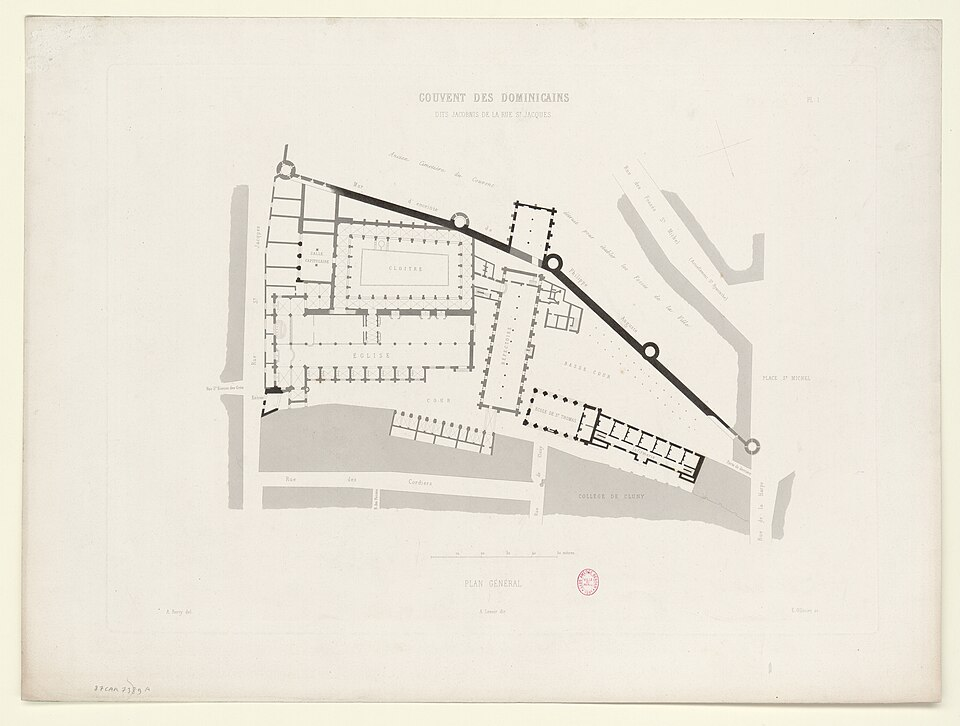OCR Specification focus:
‘the impact of the Mendicant Orders on the towns.’
The Mendicant Orders revolutionised medieval religious life, reshaping urban landscapes, strengthening the Catholic Church, and influencing society, culture, and politics across rapidly growing medieval towns.
The Rise of Mendicant Orders in Urban Contexts
The Mendicant Orders, chiefly the Franciscans and Dominicans, were founded in the early thirteenth century in response to the spiritual needs of an increasingly urbanised society. Unlike monastic orders bound to rural monasteries, these friars embraced itinerant preaching and lived in voluntary poverty, embedding themselves directly within towns. Their presence aligned with the growth of trade, commerce, and universities, offering a new model of religious engagement adapted to city life.
Key Features of Mendicant Orders
Franciscans (Order of Friars Minor): Emphasised poverty, humility, and service to the poor, inspired by the example of St Francis of Assisi.
Dominicans (Order of Preachers): Focused on education, theological training, and combating heresy through preaching and intellectual engagement.
Poor Clares: The female counterpart of the Franciscans, established for enclosed contemplative life, yet deeply respected within towns.
Spirituals and Conventionals: Internal divisions in the Franciscans reflected tensions over strict poverty versus practical adaptation to urban life.
Institutional Adaptation to Towns
The impact of the Mendicants on urban institutions was profound. They created friaries in towns rather than secluded monasteries, symbolising their focus on immediate pastoral care.

Plan of the Basilica of Santa Croce (Florence) showing the cloister, refectory, chapels, and pulpit typical of a Franciscan urban friary. The design highlights the cloistral circulation of worship, study, and community life. Labels of famous tombs are present but not required by the syllabus. Source
These institutions:
Functioned as hubs of preaching, confession, and education.
Offered alternatives to parish clergy, leading to occasional friction with local priests and bishops.
Fostered civic patronage, as wealthy townspeople financed friaries to demonstrate piety and secure salvation.
Friary: A religious house for friars, distinct from monasteries, usually situated in or near towns, dedicated to pastoral work, education, and preaching.
The friars’ commitment to serving townspeople reinforced the Church’s authority at a time when heretical movements like the Waldensians were spreading alternative religious teachings.
Structures of Preaching and Education
Preaching was at the heart of Mendicant influence. Their methods emphasised clarity, accessibility, and moral instruction, aimed at both elites and the urban poor. Dominicans, in particular, integrated with universities, producing leading theologians such as Thomas Aquinas. This structure of religious education:
Countered heresy through intellectual engagement.
Strengthened orthodoxy by disseminating scholastic theology.
Attracted urban youths seeking religious or academic careers.
Bullet points highlight their broader strategies:
Street preaching in marketplaces and public squares.
Theological schools attached to universities like Paris and Bologna.
Confession and pastoral care, ensuring lay piety was guided within orthodoxy.
Policy and Urban Relationships
The Mendicant Orders relied on papal privileges to secure autonomy from local diocesan control. Papal policy enabled friars to:
Preach widely without episcopal permission.
Hear confessions directly from laypeople.
Fund themselves through alms, reducing dependence on land or endowments.

Plan général of the Dominican convent (Jacobins) in Paris, illustrating the friary within the medieval city walls. The cloister and conventual buildings are clearly laid out, emphasising the Dominicans’ role as an urban preaching and study hub. Labels are in French and reference the Philippe-Auguste wall. Source
This autonomy occasionally sparked conflict with parish clergy, who resented the friars’ competition for donations and influence. Nevertheless, papal backing ensured their legitimacy and allowed them to flourish in the urban sphere.
Alms: Voluntary offerings of money, food, or goods to religious orders or the poor, central to the survival of the Mendicant Orders.
These policies entrenched the orders as crucial intermediaries between townspeople and the Church, reinforcing papal authority at a local level.
The Social and Economic Impact
The presence of friars in towns transformed both society and economy. Their roles included:
Charity and welfare, supporting the urban poor and sick.
Acting as arbiters in disputes, enhancing civic stability.
Promoting lay piety, encouraging guilds and confraternities to adopt spiritual practices.
Stimulating urban economies, as friaries attracted pilgrims and benefactors.
While committed to poverty, friaries became influential civic centres, subtly integrating religious authority into everyday urban life.
Cultural Influence in Towns
The Mendicant Orders also shaped urban culture:
They popularised vernacular preaching, making doctrine accessible beyond Latin-speaking elites.
Their teachings inspired art, architecture, and literature, visible in frescoes, sermons, and religious plays.
They reinforced urban religious festivals, embedding civic identity with Catholic orthodoxy.
The friars’ cultural presence reinforced their institutional roles, ensuring towns became centres of religious renewal rather than heretical deviation.
The Impact on the Medieval Church’s Authority
Ultimately, the impact of the Mendicant Orders on towns reinforced the authority of the medieval Church. By engaging directly with urban populations, they:
Undermined heretical movements through effective preaching.
Enhanced papal influence by bypassing episcopal control.
Created enduring structures that tied urban life to Catholic orthodoxy.
Their institutional and structural innovations ensured that the Church not only adapted to urbanisation but also used towns as strongholds for maintaining and extending its spiritual power.
FAQ
Unlike older monastic groups who lived in rural seclusion, the Mendicant Orders placed themselves at the centre of urban life. Their friaries were intentionally built within towns to reach merchants, craftsmen, and students directly.
Their emphasis on mobility, voluntary poverty, and preaching in vernacular languages resonated with townspeople who faced the challenges of rapid urban growth. This model made them more adaptable than traditional monastic houses.
Friaries were typically smaller than monasteries and more integrated into street networks. They often had:
A single cloister with connected ranges.
A large, plain preaching church designed for crowds.
Facilities such as refectories and dormitories but usually fewer agricultural buildings.
Their urban siting reflected their mission: to serve townspeople rather than manage vast rural estates.
Urban elites often financed friary construction and endowments to display piety and secure spiritual benefits such as prayers for their souls.
Guilds and confraternities also supported friaries through collective donations. Everyday townspeople contributed alms, creating a financial structure based on widespread community involvement rather than landed wealth.
Yes. Parish priests and bishops sometimes resented friars because:
They diverted alms away from parish churches.
Their papal privileges allowed them to hear confessions without diocesan approval.
Their popularity threatened established clerical authority.
Despite tensions, papal backing protected the friars, and their pastoral effectiveness secured enduring urban influence.
Friars preached in marketplaces, public squares, and streets, often using vernacular rather than Latin.
They adapted sermons with vivid stories, moral examples, and references to daily urban life, making their messages engaging to artisans, merchants, and students.
Dominicans especially trained in universities, combining intellectual rigour with practical sermons, while Franciscans emphasised emotional and moral appeals to inspire devotion.
Practice Questions
Question 1 (2 marks)
Name two Mendicant Orders that established themselves in medieval towns during the thirteenth century.
Mark Scheme:
1 mark for each correctly identified order, up to 2 marks total.
Correct answers include: Franciscans, Dominicans.
Do not accept Poor Clares (female counterpart of Franciscans) as a separate Mendicant Order for this question.
Question 2 (6 marks)
Explain how the Mendicant Orders influenced the religious life of medieval towns.
Mark Scheme:
Level 1 (1–2 marks): Simple or generalised statements with little detail, e.g. “They preached to people” or “They helped towns.”
Level 2 (3–4 marks): More developed explanation showing some specific knowledge, e.g. “The Franciscans and Dominicans preached in marketplaces and heard confessions. They lived in friaries close to townspeople and helped combat heresy.”
Level 3 (5–6 marks): Clear, well-supported explanation covering multiple aspects, e.g. “The Mendicant Orders transformed religious life in towns through preaching in vernacular language, which reached a wide audience. They provided confession and pastoral care, often competing with parish clergy. Their friaries became centres of charity and education, especially the Dominicans with their links to universities, reinforcing lay piety and strengthening the Church’s authority.”

